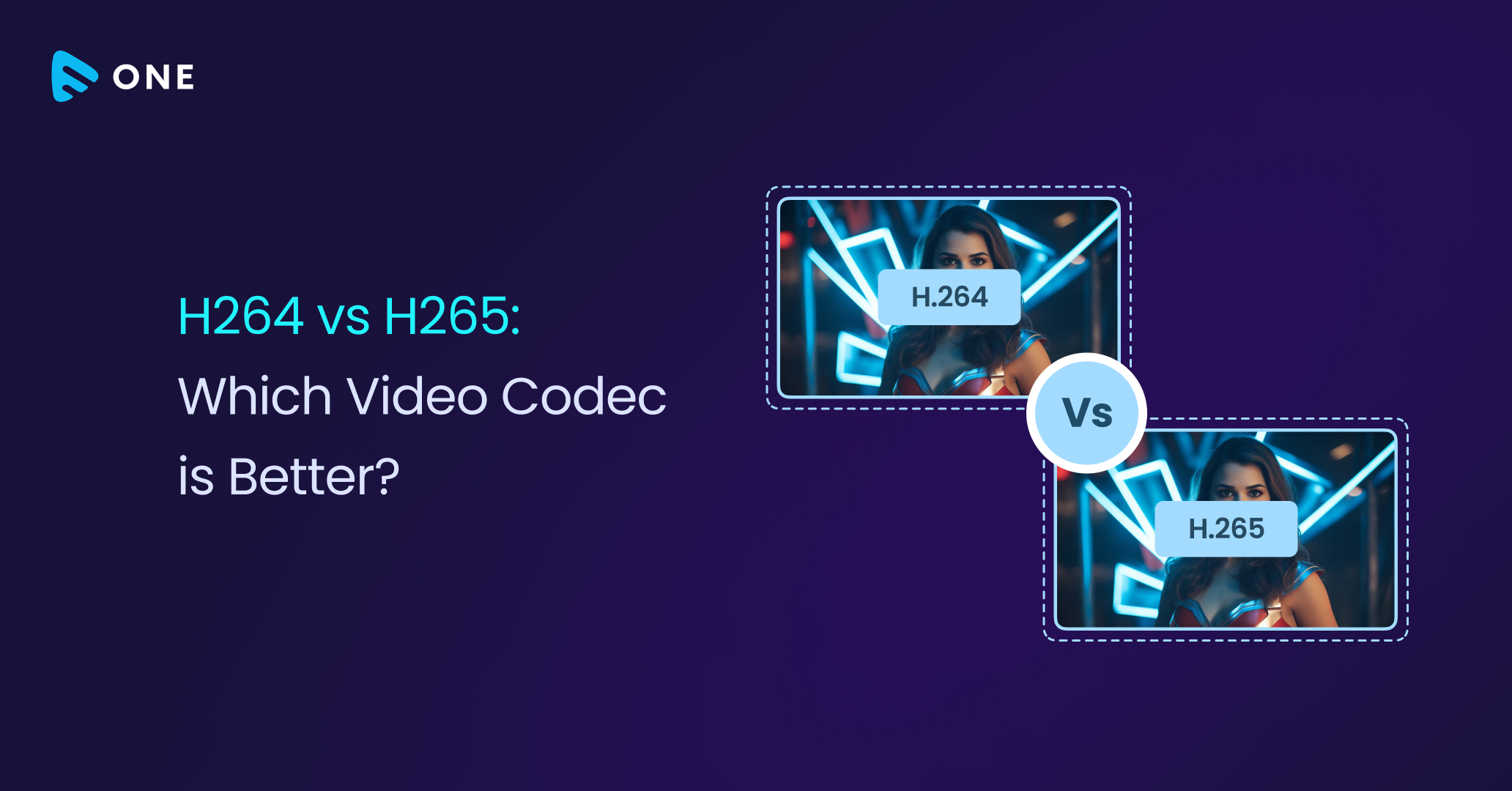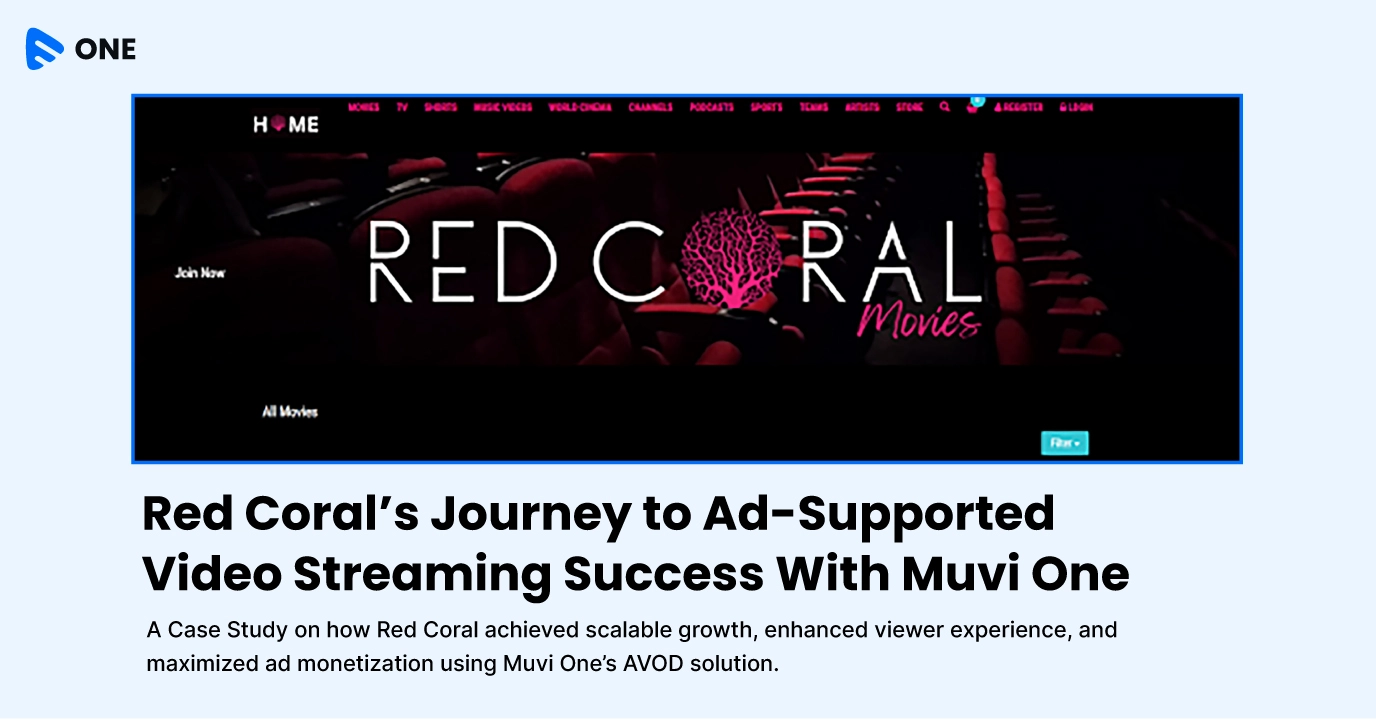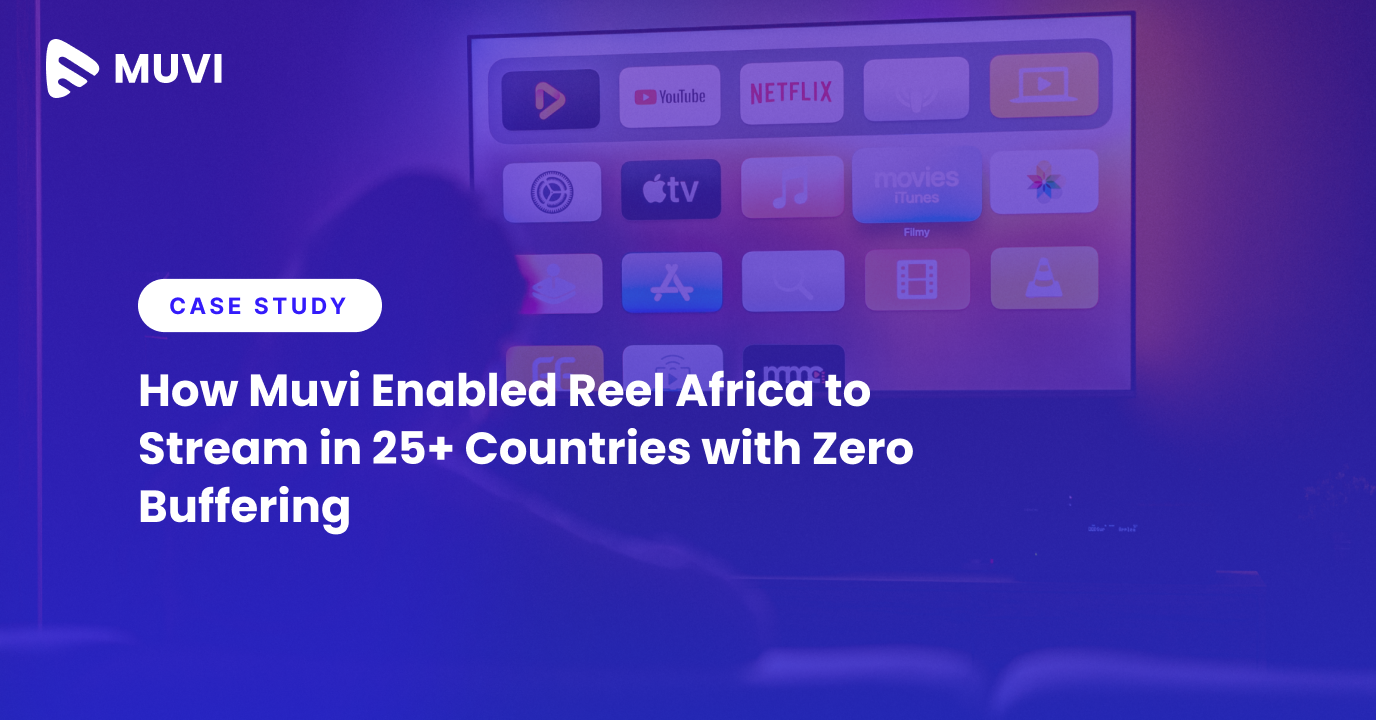There are two widely used video codecs for efficient video compression: H264 and H265. H264 has been around for a long time and is considered a standardized compression practice by many popular video streaming platforms. H265 is more advanced and is termed the successor to the H264 codec.
In this blog, we will mainly compare H264 vs H265 and highlight the major technical differences between both video codecs. Stay tuned to discover the video codec best suited for high-quality video streaming.
Understanding The Concept Of Video Codecs
Video Codec is a technology used to compress and decompress digital video files, making them ready for efficient online video streaming. Codecs are essential for optimizing the size of video files without compromising much on the quality. Without codecs, high-quality video files would be too large to stream over the internet effectively.
Compression and decompression algorithms used by video codecs play a crucial role in reducing the file size during encoding and again reconstructing the videos during transcoding for smoother playback.
Currently, the popular video codes i.e. H264 (AVC) and H265 (HEVC) are widely used across video streaming platforms for meeting the demands of ultra-HD 4K and 8K videos. In this blog, we will mainly cover the differences between H264 vs H265 and discuss which video codec is suitable for seamless streaming.
H264 (AVC) Overview:
H264, also known as Advanced Video Coding (AVC), is considered the most reliable video codec for video compression and transmission. Developed in 2003 by the Joint Video Team, H264 is popular for its ability to deliver high-quality videos at a relatively low bitrate.
With its high compression efficiency, H264 can compress video files and achieve up to a 50% reduction in file size, without significantly losing quality. The video codec supports high video resolutions up to 4K UHD and hence is used by popular video streaming platforms like Netflix, YouTube, and Hulu.
H265 (HEVC) Overview:
H265 or High-Efficiency Video Coding (HEVC), was introduced in 2013 as a successor to H264. This video codec has all the foundational principles of H264 but includes many advanced features and updated compression algorithms for superior performance. To be precise, H265 has the ability to reduce file size up to 50% better than H264, ensuring much smaller file sizes, without compromising on the video quality.
Moreover, the H265 codec is designed to address the increasing demand for high-resolution videos in 4K and 8K. It efficiently supports higher video resolutions up to 8K and High Dynamic Range (HDR) Content that auto-enhances the contrast and color ratios, ensuring a better viewing experience. Today, H265 is widely used for high-resolution streaming, 360° and VR videos.
Technical Comparison of H264 vs H265
Both video codecs have unique capabilities in terms of compression, decompression, video quality, bandwidth, and storage size. Let’s do a technical comparison of H264 vs H265 and understand which video codec performs best for seamless video streaming across devices.
H264 vs H265: Compression Efficiency
H264 uses the smart compression algorithm – Macroblocks (16 * 16 blocks) with various inter partitions down to 4 * 4. While H265 leverages the Coding Tree Units (CTUs) that can be as large as 64 * 64 block size with hierarchical quad-tree partitioning down to 8 * 8 + 4 * 4 transform units.
This CTU compression algorithm of H265 is specifically designed for more precise segmentation of the video, resulting in a higher compression ratio without compromising quality. Also, H265 comes with improved Motion Vector Prediction, allowing more accurate and sharp representation of motion objects in the video stream.
Verdict: With a sophisticated compression algorithm, H265 achieves up to 50% smaller file sizes than H264 at the same quality. Hence, in terms of compression efficiency, H265 seems ideal for video streaming, especially where storage and bandwidth are a concern.
H264 vs H265: Video Quality
H264 is compatible with video resolution up to 4K, whereas H265 supports resolution up to 8K, ensuring seamless delivery of high-action content and live streamings.
Also, H265 is designed to maintain stable video quality even at low bitrates while H264 struggles a bit in terms of video quality where the bitrate and bandwidth requirements are critical.
Verdict: No doubt, H265 is dominating H264 in delivering a stable, lag-free video experience to viewers. H265 is highly recommended for video streaming platforms, which demand uncompromised video quality despite high compression and low bitrate conditions.
H264 vs H265: File Size
The final video file size depends on how well it has been compressed by the codec. H265 basically compresses digital videos at a lower bandwidth usage than H264, hence lowering the file size.
FYI, H265 codecs produce videos at 50% lower file size than H264, saving costs both in terms of bandwidth and storage space.
Verdict: H265 trumps H264, where large video files are subjected to streaming that too within limited storage space.
H264 vs H265: Computational Needs
Due to the sophisticated algorithms used by H265, the video codec requires more processing power as well as time for encoding and transcoding digital videos, leading to higher computational costs, compared with H264.
Also, H265 videos may not be compatible with devices with older hardware and may struggle with playback. Whereas H264 codecs are compatible with almost all streaming devices.
Verdict: High-efficiency Video Coding (HEVC) or H265 comes at a cost and involves many computational complexities. If you do not want to favor those unnecessary expenses of long encoding hours and bandwidth usage, it’s recommended to use the H264 video codec.
H264 vs H265: Royalty & Licensing Costs
Both H264 and H265 are free for personal use, but for commercial use like video streaming both the platforms charge a certain amount of licensing fees.
The AVC or H264 involves licensing fees from just one entity. While the HEVC or H265 requires royalty fees from four different entities – MPEG LA, HEVC Advance, Technicolor, and Velos Media.
Verdict: If you’re just starting out with video streaming services, it’s recommended to use h264 to keep a check on the high licensing costs. However, if you want superior compression with unmatched video quality, then you can opt for the H265 video codec.
H264 vs H265: Limitations
Both H264 and H265 codecs have their own set of limitations. H264 produces a larger file size compared to H265 and thus requires more storage and bandwidth. Also, H264 supports video resolution only up to Ultra-HD i.e. 4K videos.
While H265 on the other hand has higher licensing cost compared to H264, which can be a potential barrier for small businesses. Also, H265 is not compatible with all devices, particularly old TVs and smartphones, and may demand powerful and modern hardware for efficient encoding and decoding.
H264 vs H265: Which Codec Ensures Best Performance For Video Streaming
H265 video codec is recommended for enterprise organizations that prioritize high-resolution video streaming at minimum bandwidth costs. But they must be ready for high expenses related to licensing.
However, H264 remains a considerable solution for small businesses that need standard-resolution streaming up to 4K and prioritize multi-device compatibility with less computational expenses.
Ultimately, the choice between H264 vs H265 depends on your specific streaming requirements and budget. Hope, we have delivered to all your queries related to H264 (AVC) and H265 (HEVC) video codecs.
At Muvi, we help both enterprises as well as small-scale business owners to thrive in the competitive video streaming landscape. Our world-class streaming protocols support both H264 and H265 codecs. Whether you want to stream in HD or 8K video quality, Muvi offers you the tools and technology to deliver an exceptional viewing experience at minimal costs.
Deliver High-Quality Streaming Effortlessly – Choose Muvi!
Whether it’s HD, 4K, or 8K, Muvi ensures smooth streaming and unmatched viewing experiences. Schedule a demo and see the difference. Sign up to get started today!
Recommended Reads:
High-Efficiency Video Codec (HEVC Video): All You Need to Know
AV1-HEVC-VP9: Which is the best quality video codec for online streaming
H.265 Codec – All You Need To Know
What is Video Encoding? How Video Encoding Works?














Add your comment